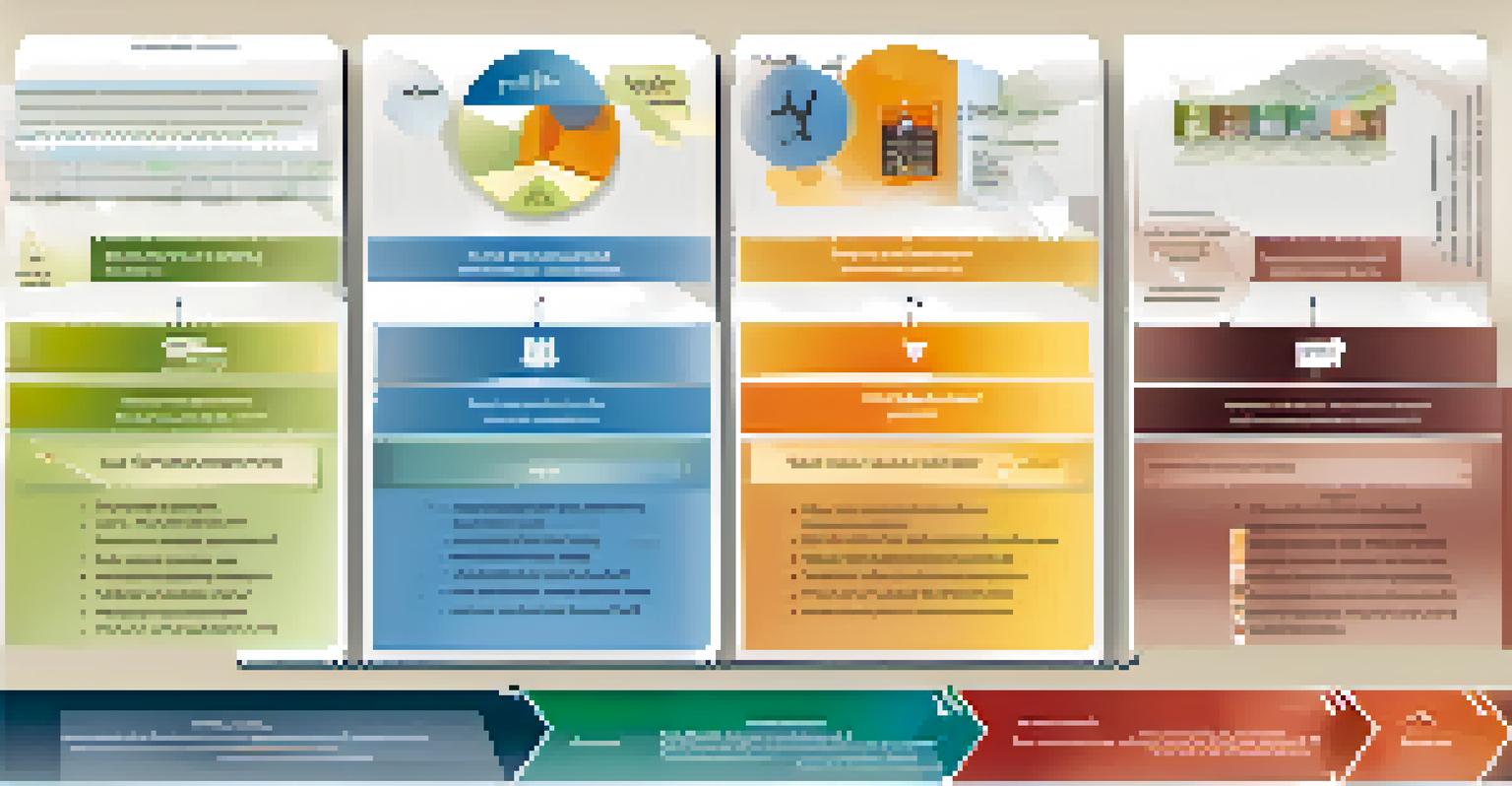Using Scenario Analysis for Investment Project Evaluation

What is Scenario Analysis in Investment Evaluation?
Scenario analysis is a strategic tool used in investment evaluations to assess potential future events and their impacts. It involves creating detailed narratives about different possible futures, allowing decision-makers to visualize and prepare for various outcomes. By considering multiple scenarios, investors can better understand risks and opportunities associated with a project.
In investing, what is comfortable is rarely profitable.
Imagine planning a road trip: you wouldn't just think about the best-case scenario of clear skies. Instead, you'd consider traffic jams, detours, and unexpected weather. Similarly, scenario analysis helps investors look beyond a single forecast to explore a range of possibilities, enhancing decision-making.
This method aids in identifying which factors have the most significant influence on project success. By analyzing different scenarios, investors can prioritize their resources effectively, ensuring they are prepared for various contingencies.
The Importance of Assumptions in Scenario Analysis
Assumptions are the backbone of scenario analysis, shaping the narratives of potential futures. These assumptions can include economic indicators, market trends, and regulatory changes, all of which can dramatically influence investment outcomes. Without well-researched assumptions, the analysis may lead to misguided conclusions.

Think of assumptions as the ingredients in a recipe: using the wrong ones can spoil the dish. Therefore, it's crucial to base your assumptions on credible data and expert insights to ensure that your scenarios are realistic and relevant.
Scenario Analysis Enhances Decisions
Scenario analysis helps investors visualize potential futures, improving decision-making by assessing risks and opportunities.
By regularly revisiting and updating these assumptions, investors can adapt their strategies to reflect new information and changing market conditions, making their evaluations more robust and reliable.
Types of Scenarios to Consider
When conducting scenario analysis, it's essential to explore a variety of scenarios: best-case, worst-case, and most likely. The best-case scenario represents optimal conditions, while the worst-case scenario outlines potential pitfalls. The most likely scenario provides a balanced view based on current trends and data.
The greatest risk is not taking one.
Picture a sports team preparing for a season; they train for a range of outcomes, from winning the championship to facing injuries. Similarly, by preparing for different scenarios, investors can develop strategies that are flexible and resilient.
Each scenario should be crafted thoughtfully, considering both external factors and internal dynamics. This comprehensive approach ensures that the analysis captures the complexity of real-world situations, providing valuable insights for investment decisions.
Using Scenario Analysis to Identify Risks
One of the primary benefits of scenario analysis is its ability to highlight potential risks associated with an investment project. By analyzing different scenarios, investors can pinpoint vulnerabilities and assess their impact on project viability. This proactive approach allows for better risk management strategies.
Imagine walking through a minefield with a map that shows where the mines are located. Scenario analysis acts as that map, helping investors navigate potential hazards before making decisions. This foresight can save time and resources, preventing costly mistakes.
Assumptions Shape Future Scenarios
Well-researched assumptions are crucial for realistic scenario analysis, as they influence the narratives of potential investment outcomes.
Moreover, understanding these risks enables investors to develop contingency plans, ensuring that they are prepared to respond effectively if adverse conditions arise.
Integrating Scenario Analysis with Financial Models
Integrating scenario analysis with financial modeling provides a comprehensive view of potential investment outcomes. Financial models can quantify the impacts of different scenarios, allowing investors to visualize the financial implications of their decisions. This synthesis enhances the overall evaluation process.
Consider financial modeling as the engine of a car; it powers your understanding of how various scenarios affect performance. By incorporating scenario analysis, investors can ensure their financial models are not only robust but also reflective of real-world uncertainties.
This integration helps in creating dynamic models that can adjust to changing assumptions and scenarios, thereby providing a more accurate representation of potential investment performance.
Real-World Applications of Scenario Analysis
Scenario analysis is widely used across various industries, from finance to healthcare, to evaluate investment projects effectively. For instance, in the energy sector, companies may analyze scenarios related to regulatory changes, technological advancements, or shifts in consumer demand. These insights guide strategic investments and operational decisions.
Take the example of a renewable energy firm considering a new solar project. By analyzing different future energy prices or government incentives, they can make informed decisions that align with long-term sustainability goals. This real-world application illustrates the practicality of scenario analysis.
Identify Risks with Scenario Planning
By exploring various scenarios, investors can identify vulnerabilities and create effective contingency plans, enhancing risk management.
By understanding how different scenarios could unfold, companies can position themselves advantageously in a competitive landscape, ultimately increasing their chances of success.
Challenges in Scenario Analysis
While scenario analysis offers numerous benefits, it also presents challenges that investors must navigate. One common issue is the difficulty in accurately predicting future events, especially in volatile markets. This uncertainty can undermine the reliability of the analysis and lead to misguided strategies.
Think about trying to forecast the weather a month in advance; it's fraught with unpredictability. Similarly, scenario analysis requires careful consideration of external factors that can change rapidly. Investors need to remain flexible and ready to adjust their assumptions as new information becomes available.

Additionally, the complexity of creating detailed scenarios can be resource-intensive. However, investing time and effort into this process ultimately pays off, as it leads to more informed and strategic investment decisions.
Conclusion: The Value of Scenario Analysis
In conclusion, scenario analysis is a powerful tool for investment project evaluation, offering insights that go beyond traditional methods. By considering various potential futures, investors can better understand risks and opportunities, ultimately making more informed decisions. This approach fosters resilience in the face of uncertainty.
Just as a skilled sailor adjusts their sails based on changing winds, investors who embrace scenario analysis can navigate the turbulent waters of the investment landscape. This adaptability is crucial for long-term success in a dynamic market.
As the investment environment continues to evolve, scenario analysis will remain an essential strategy for investors looking to enhance their evaluation processes and achieve their financial goals.